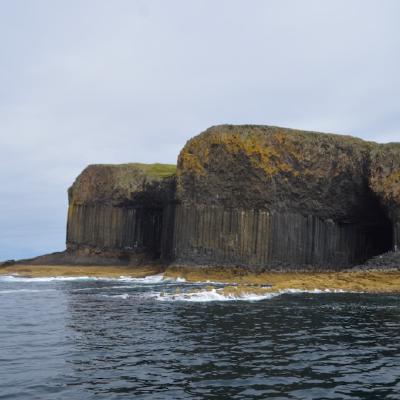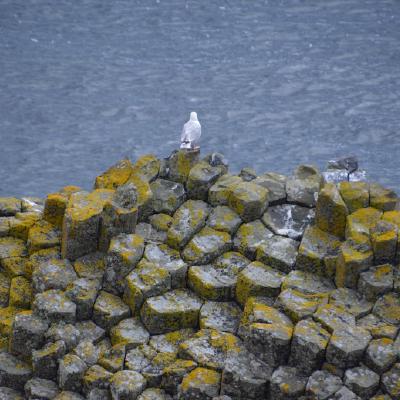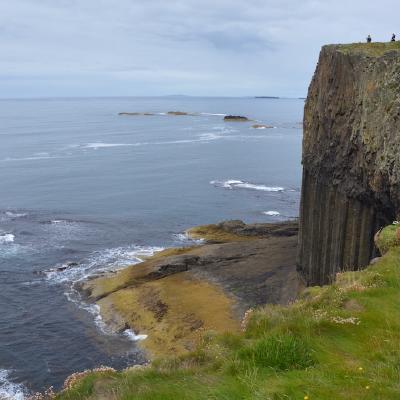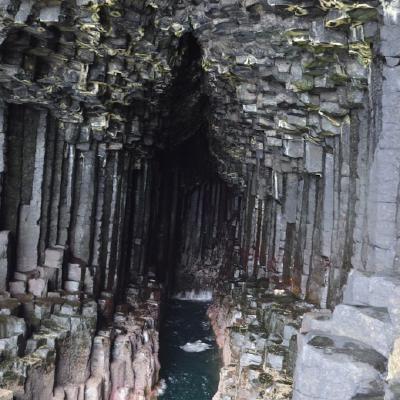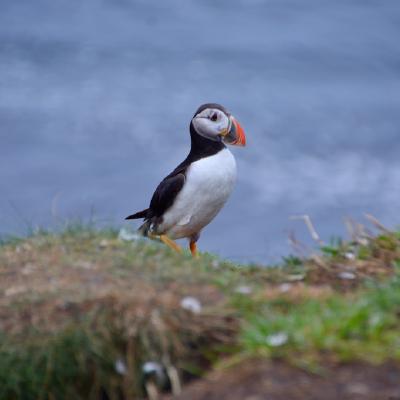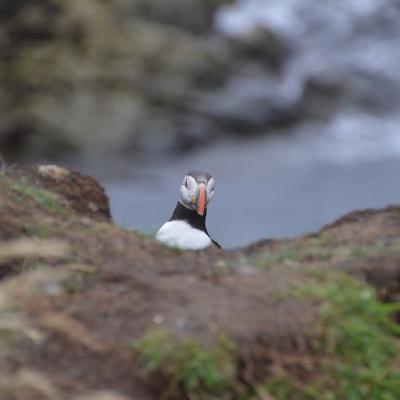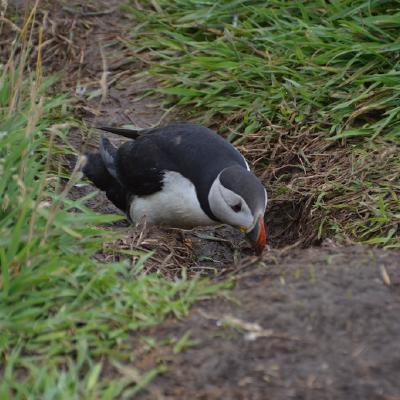Staffa and Lunga boat trip
We headed up to Tobermory early on Tuesday morning for the StaffaTours Staffa & Treshnish Isles wildlife tour which is only available during the summer until the Puffins leave Treshnish. We were fortunate to catch them as the guide told us it would likely only be a few more days before the pufflings fledged.
After we'd headed out from Tobermory the crew were alerted to a pod of dolphins a little off our route, so we took a slight detour to see them. It was amazing seeing them so close to the boat. We also saw a lot of sea birds and an otter bobbing along beside us.
Staffa
The name Staffa comes from the old Norse for stave or pillar island as the basalt columns that make up the island reminded the Vikings of their wood log houses. The island is formed by these 3-8 sided basalt columns giving it a really distinctive appearance similar to that of Giants Causeway.
We were dropped off at a jetty and then made our way up the stairway to the main part of the island - it was very busy around the jetty as it's the only way onto the island and a lot of the tours stop here. Me and Kai then headed across to the cairn and trig point at the top of the island on the side of the cliff over Fingal's cave.
After this we headed back over to meet Laura and Jessica to explore more of the other side of the island and then head down and round the coast to see the inside of Fingal's cave.
After this it was time to head back to the jetty to reboard the boat to head across to Lunga.
Lunga
Lunga is the largest of the Treshnish isles and the name comes from Norse "longship island". The boats pulled up against a floating jetty with a small rowing boat attached to it and we were wondering how we'd all get ashore from that, but then realised that the boat would push the floating jetty into the shore proving quite a neat set up.
From there we went up the steep path marked with a helpfully painted upward arrow to the cliff top where we found ourselves a spot to sit and have lunch just back from the puffin burrows in the long grass on the cliff edge. There we spent the rest of the afternoon puffin watching and it was magical seeing so many puffins flying in and diving into their burrows with food for their pufflings.
The presence of humans on the cliff top is apparently good for keeping the skuas away from stealing the puffins food, but we had to be careful to stay back from the burrows to avoid crushing them.
In a few days time the pufflings would fledge by jumping off the cliff in the dead of night and all of the puffins would gone - spending most of the year living out over the sea until they return again to breed next year
On the way back as we were heading in to Kilchoan (the west most village on the mainland) as the first drop off point we saw a pod of bottle nosed dolphins alongside the boat.






